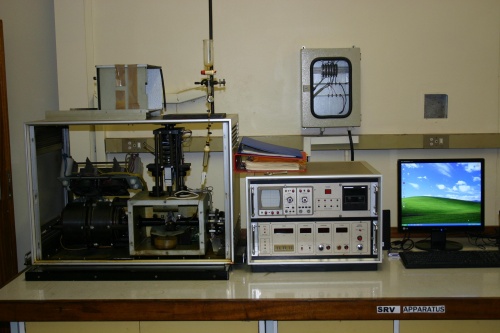T02 Optimol SRV Machine
The SRV apparatus (German acronym for oscillation, friction and wear) is a 1986 model that was donated to the University of Pretoria in 1987. The machine traditionally tests the lubricating properties of oils and greases, but at the University of Pretoria it is used to test diesel lubricity together with the HFRR. The machine measures the load carrying capacity (LCC) of a certain fluid by measuring when film break though occurs. The machine utilizes a ball-on-disk configuration and can be operated in one of two conditions:
- A constant load test (like the HFRR); and
- An increasing load test where the load increases @ 50N/min.
There is no ASTM or ISO standard for testing diesel fuel with the SRV but the "in-house" test developed for testing diesel utilizes conditions that are closer to that of modern engines, when compared to the HFRR.
Contents
[hide]Current/Previous projects
2007
Petri Labuschagne, Upgrade of the SRV test equipment
Report | Project files
Documentation
User Manuals
The SRV Operation Manual can be found here
Wiring diagrams
A scan of the SRV wiring diagram can be found here
Test Procedure
The SRV Open Gear Lubricants procedure
The SRV test procedure for open gear lubricants (SRV OGP Procedure) is intended as a screening test for the performance of open gear lubricants. A load test as well as a friction and wear test is performed at three temperatures, namely 25, 55 and 80°C. A ring is fitted around the top specimen and filled with grease, prior to the onset of the test, so as to ensure that the surfaces in contact are always replenished with lubricant and no starvation occurs, as might be the case when higher- consistency greases are tested without a ring.
